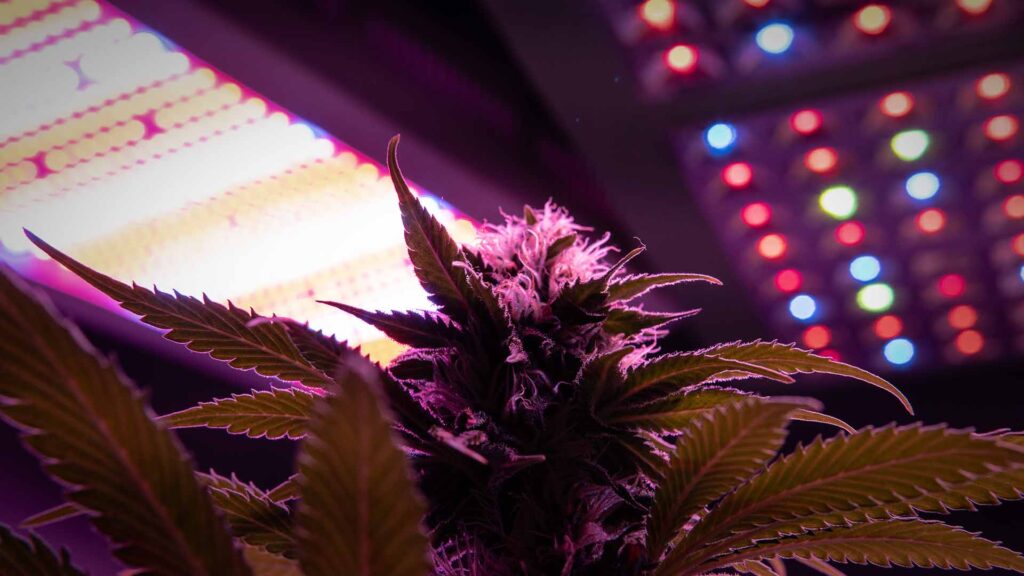Cannabis and Glaucoma
As many as 3 million Americans suffer with glaucoma, the name given to a group of eye diseases that cause vision loss and blindness. The cause is unknown, there are no early warning signals, there is no cure and it is irreversible once vision loss is complete. The good news is that new approaches and treatment options are being developed in both the traditional scientific community and in cannabis research. In this article I will define the many different types of glaucoma, list the symptoms, risk factors, and present treatment options, including medical cannabis.=

The most widespread symptom is an increase in eye fluid or intraocular pressure (IOP) which may lead to optic nerve damage. However, there are those with glaucoma who have normal or even low eye pressure. This factor has convinced researchers to look beyond the pressure component and begin investigating ways to protect the optic nerve from damage.
Symptoms for All Types of Glaucoma*
- Tunnel vision
- Severe eye pain
- Blurred vision
- Headaches
- Blind spots
- Nausea and vomiting
- Eye redness
- Halos around lights
- Cloudy eyes
- Produces more tears than normal
- Sensitivity to light
- Have larger eyes than normal
- *Different types of glaucoma produce different symptoms
Open-Angle Glaucoma
9 out of 10 Americans with glaucoma have open-angle glaucoma, the most common type. An increase in eye pressure is caused by a buildup of fluid, known as aqueous humor, that flows throughout the inside of the eye. In a healthy eye, the fluid drains out through tissue called the trabecular meshwork, located where the iris and the cornea intersect. If there is an overproduction of fluid or a fault with the drainage system, the fluid doesn’t flow out normally, resulting in an increase in eye pressure.
Normal-Tension Glaucoma
Considered to be a subset of open-angle glaucoma, 1 out of every 3 people who has open-angle glaucoma has this type. They have normal eye pressure. It typically affects those with low blood pressure, heart problems, a genetic predisposition or those of Japanese descent.
Angle-Closure Glaucoma
Also known as narrow-angle or acute glaucoma, this type is considered a medical emergency which requires immediate treatment. It occurs when the iris bulges forward, restricting or blocking the drainage angle formed by the cornea and iris. The IOP increases as the result of the obstruction of the fluid from circulating throughout the eye. Those people born with narrow drainage angles are at an increased risk for this type of glaucoma.
The outer edge of the iris stops fluid from draining out of the front of the eye. Because there is such a rapid buildup of fluid causing a sudden increase in eye pressure, left untreated, it can cause blindness in just a few days. Laser treatment and medication allows the fluid to drain, reducing the eye pressure.
Slow/Chronic Angle-Closure Glaucoma
Often asymptomatic, this type happens much more gradually.
Congenital Glaucoma
Infants are born with this type and it occurs in 1 out of every 10,000 births. The symptoms are easy to see. The infants have larger eyes than normal which are cloudy, sensitive to the light and produce more tears than normal. The immediate intervention of a surgical treatment can typically prevent permanent loss of vision.
Higher Risk Factors
- Older than 60 years of age
- Have increased intraocular pressure (IOP)
- African American decent older than 40 years of age
- Latino decent older than 40 years of age
- Have certain medical conditions which include high blood pressure, heart disease, sickle cell anemia and diabetes
- Genetic predisposition for glaucoma
- Have had a previous eye injury or certain types of eye surgery
- Have used corticosteroid medication long term, especially eye drops
- Have corneas that are thinner in the center
- Are extremely nearsighted or farsighted
There is a strong hereditary component; researchers have identified genes for high eye pressure and optic nerve damage. However, anyone can develop glaucoma. Getting regular dilated eye exams is essential for early diagnosis and early intervention. The recommendation for eye exams is 2-3 years for everyone and 1-2 years if you are in the high risk group.
Dilated Eye Exams
Dilation via eye drops allows more light to enter your eye, making it easier to check for eye problems. The following tests are performed:
- Peripheral vision assessment
- Acuity test for clarity
- Test to assess eye muscle function
- Test to assess how your pupils react to light
- Test to measure eye pressure.
- Treatment Options
- Eye Drops
The FDA has just approved a few different brands of prescription eye drops that improve the drainage of the eye fluid from the base of the cornea. They do carry some adverse side effects and are not recommended as the first treatment option.
Scientists are currently working on the development of eye drops that protect the optic nerve from damage.
Laser Treatment
Performed in the ophthmalogist’s office, laser treatment may be used to drain off the excess eye fluid, reducing the IOP. There are some risks with this procedure.
Surgery
Trabeculectomy
Glaucoma Implant Surgery
Minimally Invasive Glaucoma Surgery (MIGS)
About 15% of people who receive conventional treatment will become blind in at least one eye within 20 years.
How Does Cannabis Help Glaucoma
Cannabis research, started in the 1970s, showed promising results that cannabinoids lowered the IOP by as much as 30% for 3-4 hours, peaking at 2 hours. In those days, the only delivery method available was smoking, the effects of which lasted 3-4 hours. Once the effects of the cannabis wore off, the IOP increased which led many scientists to conclude that cannabis was not an effective treatment option. Now that there are many more delivery methods available which would provide longer effects, medical cannabis is considered a viable treatment option for glaucoma.
Cannabis Studies
A 2002 Finnish study investigated different cannabinoids for their potential to suppress apoptosis and provide antioxidant effects. Researchers believe that cannabis has the possibility of reducing optic neuron damage.
A 2016 Canadian study examined how alterations in cannabinoid signaling through the modulation of the Endocannabinoid System (ECS) may be neuroprotective while lowering the IOP.
Neuropathic optic nerve pain, which causes severe headaches, is very common during the advanced stages of glaucoma. With its analgesic, neuroprotectant and anti-inflammatory properties, cannabis may be effective in the reduction of optic nerve edema as well as inhibiting the progression of the disease. More research is needed to support the latter claim, but these developments show great promise in treating the disease.
Sources:
nei.nih.gov, Types of Glaucoma, updated June 26, 2019
nei.nih.gov, Get a Dilated Eye Exam, updated Aug 2, 2019
apothecarium.com, Cannabis and Glaucoma, Cameron Klar, May 14, 2018
mayoclinic.org, Glaucoma
knowablemagazine.org, Putting the Squeeze on Glaucoma, Chris Woolston, June 4, 2019

